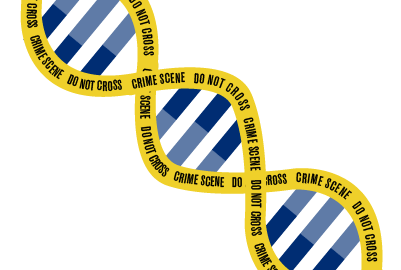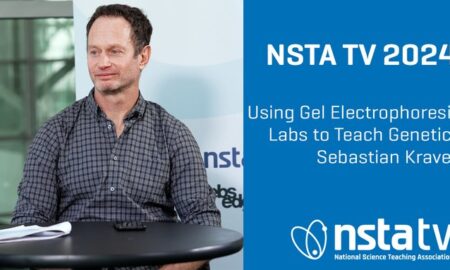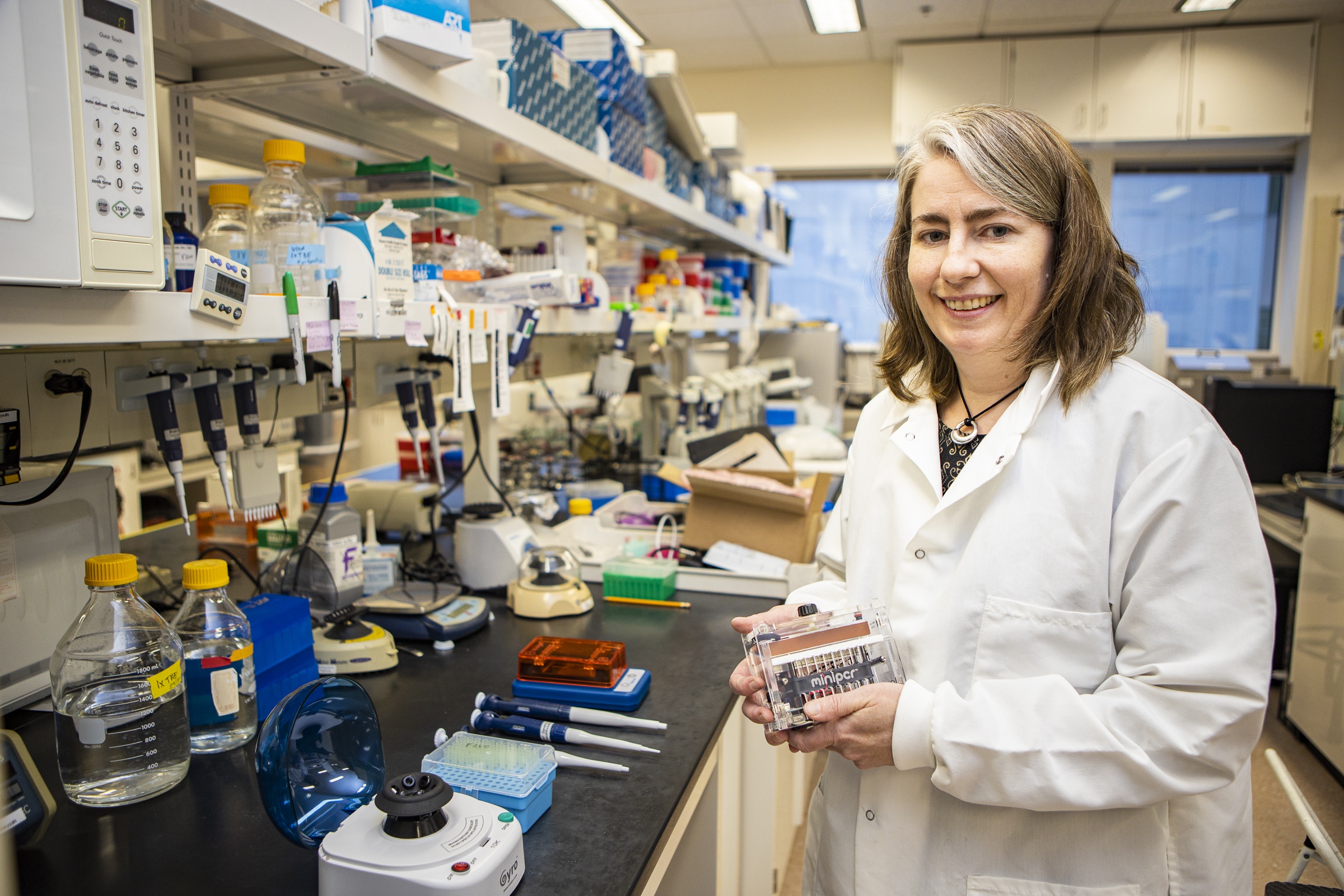Funding Biotech Equipment Through a Grant
At miniPCR bio, our goal is to make equipment and activities that genuinely improve student learning while remaining affordable. Still, we realize the state of school funding, and understand that any purchase of lab equipment can represent a sizable investment that can stretch or even surpass many classroom budgets. Grant funding can be an excellent way to close that funding gap, and its one that many teachers have used to outfit their classrooms with miniPCR bio equipment.

Mr. Jacob Russo, a biology teacher at Los Altos High School in California, is someone who was able to outfit his classroom with grant funding and he gave us permission to share his experience here. We first ran into Mr. Russo at the annual meeting of the National Science Teachers Association meeting in Atlanta. Excited about the opportunities miniPCR bio equipment could provide, Mr. Russo looked into funding to outfit his classroom. After his first try was rejected last spring, this February Mr. Russo contacted us to let us know that his grant had been funded, and by May he was sharing results from his classroom.
Grant applications can come in many forms, but if you are looking for inspiration for how to write yours, we suggest reading Mr. Russo’s application below. He does an excellent job of making clear the benefit that his students will gain from access to new technologies. He makes clear how the equipment will be used and how it will directly affect student learning goals in his classroom. He links specifically how performing the miniPCR Sleep Lab will connect concepts of genetics, evolution, circadian rhythms, and biotechnology, and also how equipment could be used more broadly across the curriculum. But what impressed us most (and likely grant funders as well) is the passion with he speaks about education and how this equipment will affect learning in his classroom. We thank Mr. Russo for his dedication and enthusiasm and look forward to seeing more of the exciting results in his classroom!
For additional resources and ideas on funding equipment and supplies for your classroom, be it PCR, gel electrophoresis, or other biology laboratory equipment, please see these helpful resources compiled by Edutopia.
— Thank you Mr. Russo for sharing your curriculum ideas and grant funding experience!
From Mr. Jacob Russo:
“I attended the National Science Teachers Association conference in Atlanta in March. I went to a presentation given by an evolutionary anthropologist from Duke University about evolutionary medicine (Dr. Charles Nunn, who stated during the presentation that he makes himself available for video conferencing with students around the country). The focus of his presentation was sleep and how there are many evolutionary and ecological questions around the topic of sleep. Yes, students can appreciate stories and research around well-known examples of Darwin’s big ideas of common ancestry, adaptation, and natural selection. Examples such as the Galapagos finches and the complete fossil record of whales are interesting, but most students haven’t visited the Galapagos or gone whale watching. What impressed me most about the lecture was the case Dr. Nunn made for studying evolutionary processes using sleep as an anchoring phenomenon. As a teacher and a parent, the topic of sleep is one that is near and dear. Students don’t get enough of it, legislation is proposed for ensuring students can get more, etc. Point being, I’m hard pressed to come up with another topic that is more relevant for high school students.
“There are a host of evolutionary questions that can be raised when discussing sleep. What is sleep? Why do we sleep? Do all animals sleep? Has sleep been shaped by natural selection? Does sleep change over time? Are there any risks involved? What kind of sleep behaviors and variation are observable in the animal kingdom? Why do humans sleep less than any other primate? Is there a difference in sleep patterns in different human cultures (i.e., hunter-gatherer versus modernized western societies)? In what ways do changes in sleep over the course of our evolutionary history make us more susceptible to disease? Incorporating sleep will provide a relevant, novel, and engaging opportunity for students to answer these kinds of questions when studying evolution and ecology.
“Later that same day, I attended a workshop put on by representatives of miniPCR bio. They were demonstrating a laboratory investigation that allowed students to amplify and analyze a gene implicated in circadian rhythms. The name of the lab was “miniPCR Sleep Lab – Lark or Owl.” It didn’t take much to connect this laboratory to the presentation I had attended earlier. The lab looks for a genetic basis for whether you are an early riser or someone that should probably avoid taking morning classes. Through the use of the polymerase chain reaction (PCR) and gel electrophoresis, students discover their own genotypes for the circadian clock gene Per3. A benefit of the lab comes from the fact that we may not see a one-to-one relationship between genotype and phenotype. This opens up the door for statistical analysis and mathematical modeling (in discussion and in practice) that allow patterns to emerge. These patterns allow us to establish the relationship between genotype and phenotype for Per3. This is a huge part of the scientific process that is just beginning to see the light of day in our classrooms. Beyond this, having the opportunity to discuss variation in sleep among humans and then actually observe this variation at the level of the gene is something that will truly elevate the teaching of evolution.
“This project is certainly something that can be adopted by my course team members as well as others (including those at MVHS). The teaching of evolution at LAHS involves a good deal of modeling and anecdotal activities. I envision this project as a means of incorporating more inquiry into the teaching of evolution, heightening the curriculum that we currently utilize. In addition to the increase in depth and breadth knowledge that will come with a new approach, students will develop (or continue to develop) skills with tools and techniques used in biochemistry and molecular biology research and biotechnology related career paths such as micro-pipetting, programming thermal cyclers for the PCR, performing gel electrophoresis and analyzing gels. These skills are directly referred to in the AP Biology Framework and are aligned with science practices integrated into the Next Generation Science Standards.
“The five miniPCR thermal cyclers and 8 blueGel systems will greatly increase the ability of each student to get a hands on experience compared to more traditional hardware. This technology is significantly more user friendly, mobile, and efficient. A big bottleneck with the limited technology we have now is that it’s difficult for students to obtain results by the end of the period. Teachers are rushing around during their free periods or after school generating images for students to see and analyze the next time the class meets. With the blueGel systems, students can see the separation of their DNA fragments in real time (they can even make timelapse videos showing their alleles separating in the gel!). It really is a quantum leap forward for classroom technology. The miniPCR systems, thanks to their mobility, also lend themselves well to field work. The learning experience will become more meaningful for students. It will also encourage teachers to more fully embrace the technology. They will see new ways this technology can be incorporated into the curriculum, stimulating further creativity and collaboration within our department.
“I only had 40 minutes with this technology at the NSTA and my mind was swimming with ideas. I think this will be true of my peers once they see it in action. Colleagues aside, after reading through the miniPCR blog, I’m also excited to see how our Advanced Science Investigations students (and others that choose to take on independent science projects) will embrace these systems.”
Mr. Jacob Russo










